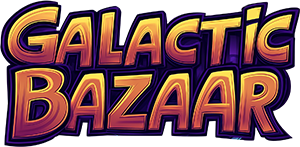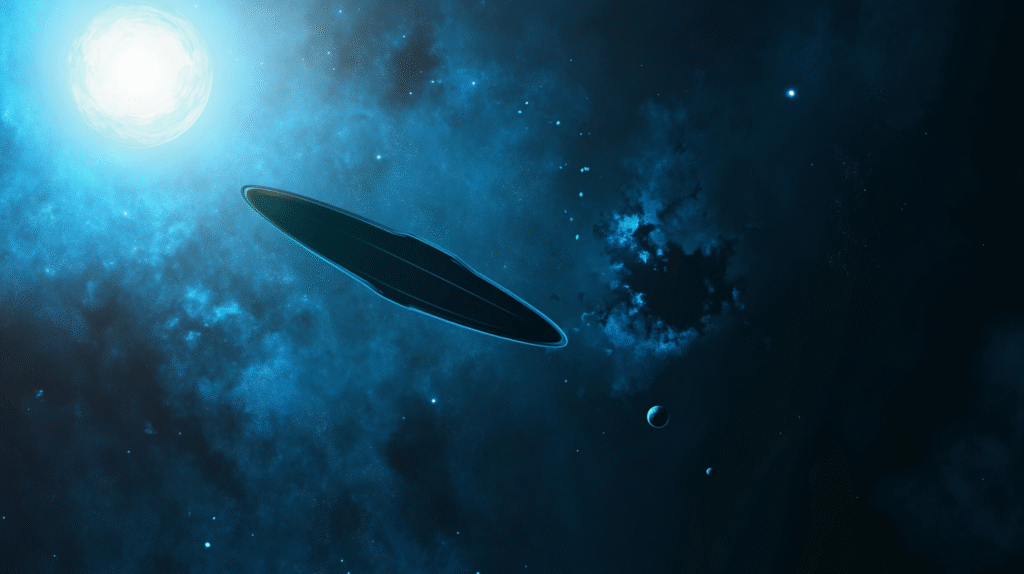When the mysterious object ʻOumuamua streaked through our solar system in 2017, it ignited more than just headlines — it lit a spark in the minds of astronomers and dreamers alike. The first confirmed visitor from another star system, ʻOumuamua defied easy categorization. Some said it was just a strange shard of rock or ice. Others dared to ask a bolder question: what if it was something more — an artifact, a messenger, a probe?
Now, with the recent arrival of 3I/ATLAS — another interstellar traveler, glowing eerily like a comet — that question resurfaces. While the scientific consensus leans toward natural origins, its strange behavior fuels speculation. Could objects like these be more than random wanderers? What if they’re part of something larger — advance scouts for a civilization mapping the invisible highways of galactic commerce?
From Ancient Trade Routes to Interstellar Pathways
Human history offers a familiar pattern. Long before the bustling ports and crowded markets of global trade, there were scouts — small, agile missions sent to explore, map, and understand the terrain. Portuguese navigators, long before dominating the seas, sent nimble ships down the African coast to chart winds and harbors. Polynesian explorers launched voyages into the Pacific guided by starlight and memory. Caravans crossed deserts not by luck, but by carefully probing the sands for passable routes.
These early forays were not about transporting wealth, but about discovering where wealth could flow.
So what if ʻOumuamua and 3I/ATLAS serve a similar purpose on a cosmic scale? Not treasure ships, but merchant scouts — collecting data, testing routes, and locating resources. Not for our benefit, necessarily, but as the first signs of a broader network of interstellar exchange.
Navigating the Interstellar Trade Winds
Space, for all its emptiness, is far from chaotic. It’s shaped by the invisible forces of gravity and momentum — forces that create paths of least resistance, not unlike ocean currents or wind systems.
NASA already takes advantage of these forces through gravity assists, using planets to slingshot spacecraft farther and faster with minimal fuel. An intelligent spacefaring civilization would likely do the same. Giant planets like Jupiter wouldn’t just be planets — they’d be transit hubs, gravitational stepping stones along an invisible superhighway.
Zooming out even further, the galaxy itself may offer vast navigational pathways. The rotation of the Milky Way, the drift of nearby stars, and the distribution of gas and dust across interstellar space could all influence how ships — or probes — move from system to system. These galactic corridors might function just like monsoon winds did for early Indian Ocean traders: seasonally predictable, and strategically essential.
Refueling at the Cosmic Oasis
No traveler can journey without supply. In space, the equivalents of wells, ports, and markets may take the form of comets, icy moons, and asteroids — bodies rich in water, metals, and volatiles that are critical for propulsion, life support, or manufacturing.
3I/ATLAS, glowing and active even in the deep cold of space, might not just be passing through — it could be probing. Searching for resources. Charting potential resupply zones. These remote bodies, often overlooked, could one day serve as pit stops for advanced civilizations.
If trade exists between stars, then these objects are the lifeblood — the gas stations and oases of a galaxy in motion.
The Strategic Choke Points of Space
Throughout history, controlling chokepoints — narrow passages like the Bosporus, the Strait of Malacca, or Kashgar on the Silk Road — determined who prospered and who faded. Space, too, likely has its own strategic junctions.
Gravitationally stable zones such as Lagrange points may offer energy-efficient spots to build stations or change direction. Certain star systems may act as natural intersections between nearby habitable zones. Others might be rich in rare elements, making them vital for advanced manufacturing or propulsion.
Our own solar system, with its array of gas giants, water-bearing moons, and a metal-rich asteroid belt, fits this profile surprisingly well. Whether by design or coincidence, we may live at a natural crossroads.
Unusual Behavior: Why 3I/ATLAS Raises Eyebrows
While scientists often lean toward natural explanations — and rightfully so — 3I/ATLAS is odd. It began glowing long before it neared the Sun, which is atypical for comets. Its brightness increased steeply, suggesting more than just solar heating. And its approach follows a hyperbolic path, the kind you’d expect not from random debris, but from something launched — or navigating intentionally.
These signs don’t prove anything. But if a civilization were sending out scouts, these are exactly the kinds of behaviors we might expect: slow approaches, long-distance scans, tests of resource bodies, and gravitational studies. Not unlike what we do today with our own space probes.
Earth’s Place on the Map
If the merchant scout hypothesis holds any truth, then Earth today is not a player, but a waypoint — a small village, like those on the shores of medieval trade routes, soon to be swept into something far larger.
We may be seen as a future trading partner — rich in metals, water, and culture. Or as a potential rival, developing our own spacecraft and scanning the skies. Or maybe just a useful pit stop on a much longer voyage between far-off systems.
Just like villagers who once spotted sails on the horizon, we may already be under quiet observation — not by invaders, but by traders.
The Future: From Village to Bazaar
Even if 3I/ATLAS proves to be nothing more than a spectacularly odd comet, the idea it inspires is powerful. What if the galaxy really is crisscrossed with trade routes?
Perhaps our asteroid belt will one day echo with mining rigs and cargo ships. Perhaps our solar system will host embassies and exchanges, just as ancient ports welcomed foreign ships. Perhaps our digital signals already mark us as open for business.
In a few centuries, the Galactic Bazaar may be less myth, more marketplace — and today’s strange visitors may be the first signs that we’re not alone in our desire to connect, exchange, and explore.
Conclusion: When the Scouts Arrive
History warns us not to overlook the scouts. They often arrive quietly, but they’re the first whispers of transformation. From caravels to caravans, those early missions preceded revolutions in human history.
If ʻOumuamua and 3I/ATLAS are scouts — even just in metaphor — they may be signaling something extraordinary: the start of humanity’s participation in a network as old as the stars.
We may already be on the map.

